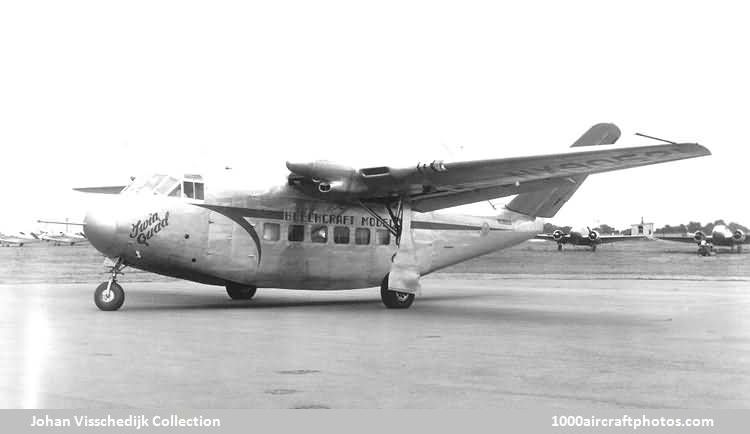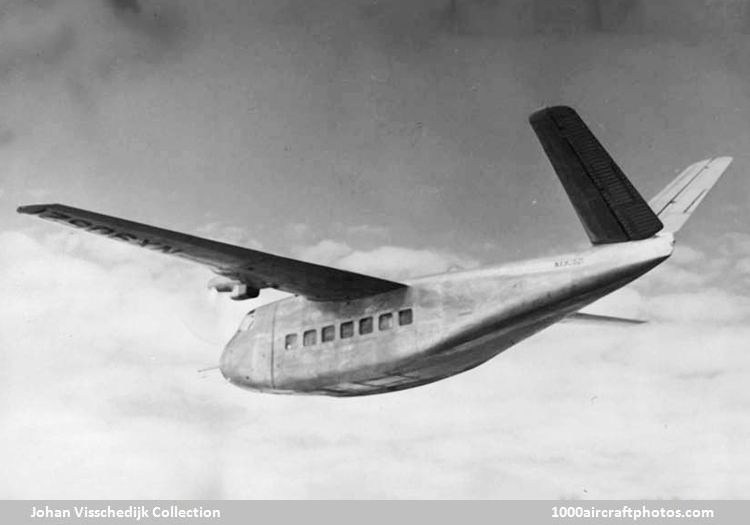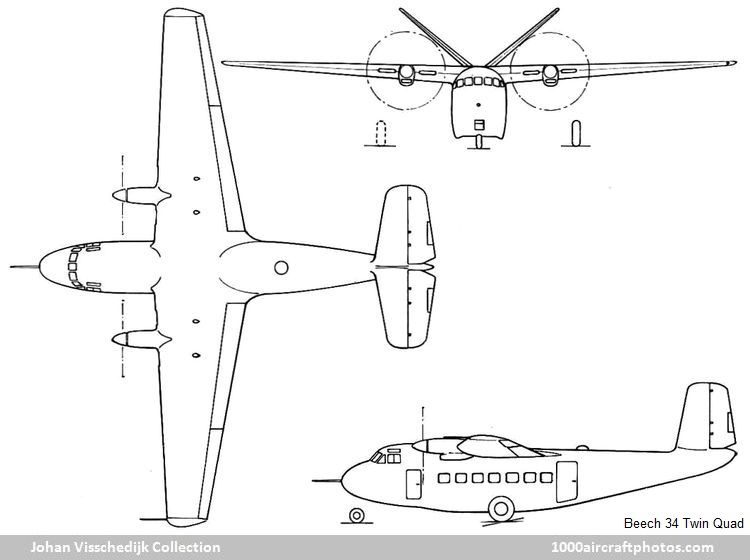03/31/2022. Remarks by Johan Visschedijk: "Early in 1945, after cessation of hostilities, the commercial feeder line market was expected to develop, and Beech Aircraft Corp started development of an all-metal twenty-seat high-wing monoplane for economical transport of passengers and mail from unimproved airfields. The aircraft, known as the Model 34 Twin-Quad and designed by Beech engineers Alex Odevseff, W.A. Day, J.W. Massey and W.O. Stephens, displayed several unusual features. The most unusual one concerned the powerplant: it used two engines, housed inside relatively short and narrow cowlings, with individual clutch assemblies, in each wing driving a single propeller through a common gearbox. These engines were four, surplus, eight-cylinder Lycoming geared, supercharged horizontally-opposed GSO-580s developing 375 hp each, driving Hamilton Standard constant-speed, fully-feathering propellers.
Structurally, the Twin-Quad was an all-metal high-wing monoplane with a butterfly tail and an electrically-operated tricycle landing gear with quite long legs. The cabin was designed to carry twenty passengers and their baggage, plus approximately 1,000 lb (454kg) of mail or freight. A specially designed interior arrangement feature allowed the load to be varied in proportion. In addition to a large cargo space between the passenger compartment and the cockpit, the forward section of the main compartment, normally seating six passengers, could be converted for additional cargo. A movable bulkhead complete with entrance door was provided so that the cargo compartment could be isolated from the passenger compartment. In addition to the prototype, a second airframe was built for static tests.
Registered NX90521 on September 4, 1947, the prototype made its first flight on the following October 1 from Beech Field. Although the aircraft was designed for a maximum speed of 300 mph (480 kmh), that figure was never attained during the two hundred hours of extensive flight testing accomplished from October 1947 to January 1949. The fuselage keel had been designed to withstand wheels-up landing loads and one unintentional landing incident demonstrated that the Twin-Quad could sustain such an accident with minimal damage. Unfortunately, on January 17, 1949 the prototype made a forced landing shortly after take off. Two crew members were killed and the prototype was damaged beyond repair. Work was started at once on a second similar aircraft, but it quickly became quite obvious that customers were scarce and the project was terminated. The registration was cancelled on June 14, 1949."


